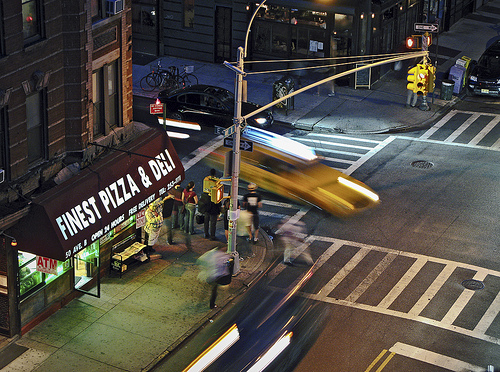Last week’s article on the way taxis are regulated in the Pacific Northwest has generated a lot of attention and raised a lot of questions. (We’ve seen some conversations on Reddit feeds for Seattle, Portland, and Vancouver; been on the front page of 24 Hours Vancouver; and been heard on several radio and TV stations.) It’s a complex issue, and I’d like to revisit a few points that could have been covered in a longer article.
Many observers focused on the price differences, pointing out that the correlation between cab availability and price is not direct. That’s right. It’s not a one-to-one relationship. Most cities limit both price and availability, so neither are free to find their natural equilibrium. One of the primary goals of the post was to highlight how unusual this level of regulation is.
Taxi boards control both the price and the supply. If they were to drop only one restriction, the other might remain in place, at least temporarily. Getting more cabs on the street in Vancouver, for example, is probably what the market wants, but prices wouldn’t go down until the board decides to lower rates or stop controlling them altogether. And are we confident that prices would go down? The example of Washington DC is the most powerful evidence that they would.
We also agree with many commenters that “anarchy” in the taxi industry would be destructive, and we’ll reiterate that driver safety, vehicle standards, pricing transparency and consumer protection have places in taxi regulation.
Many commenters looked at wages and benefits for taxi drivers, which should certainly be part of any discussion of regulatory changes. The presence of more cabs will actually encourage more cab usage — as well as the sustainability benefits we’re interested in — so the overall market size will increase and cabs could be busier than they currently are. But the effect of current policy is to shield cab companies and drivers from competition, which doesn’t serve the public well.
What hasn’t been discussed and is still very puzzling to me, is “How did we start regulating taxis this way?” and “Why should this particular industry be treated so differently than others?”









zefwagner
I can see how taxis started to get regulated, because obviously anyone with a car could technically start their own taxi service. When I lived in Costa Rica they had a poorly run taxi monopoly so there were always lots of “pirate taxis” around–they were just regular-looking cars but the driver would say “taxi!” when you passed by. They were unregulated and would undercut the official taxis.
Clearly the system went too far in the direction of over-regulation when it started controlling supply and price in such a heavy-handed way. Anyone person or company who is willing to provide a quality vehicle, abide by safety regulations, and follow the rules should be able to operate a taxi. This business of auctioning off taxi medallions for 100,000s of dollars is insane.
Stephen Rees
Vince Houmes asked “How did we start regulating taxis this way?”
After the first World War there were large numbers of surplus motor vehicles and many ex servicemen looking for work. Offering rides in a car at low fares became a popular way for them to enter the transport business. They not only competed with established taxi companies, they also took trade away from the streetcars. Often they would ply the same routes, scooping up riders from in front of the streetcar for only 5 or 10 cents. They became known as “jitneys”. Pressure to regulate this business came from the streetcar companies – who had paid the cities for the privilege of operating on their streets. There were also concerns about safety and traffic congestion. “Gypsy cabs” continue to appear in a number of cities where the enforcement of regulation is lax and taxi service inadequate: New York City being only one example.